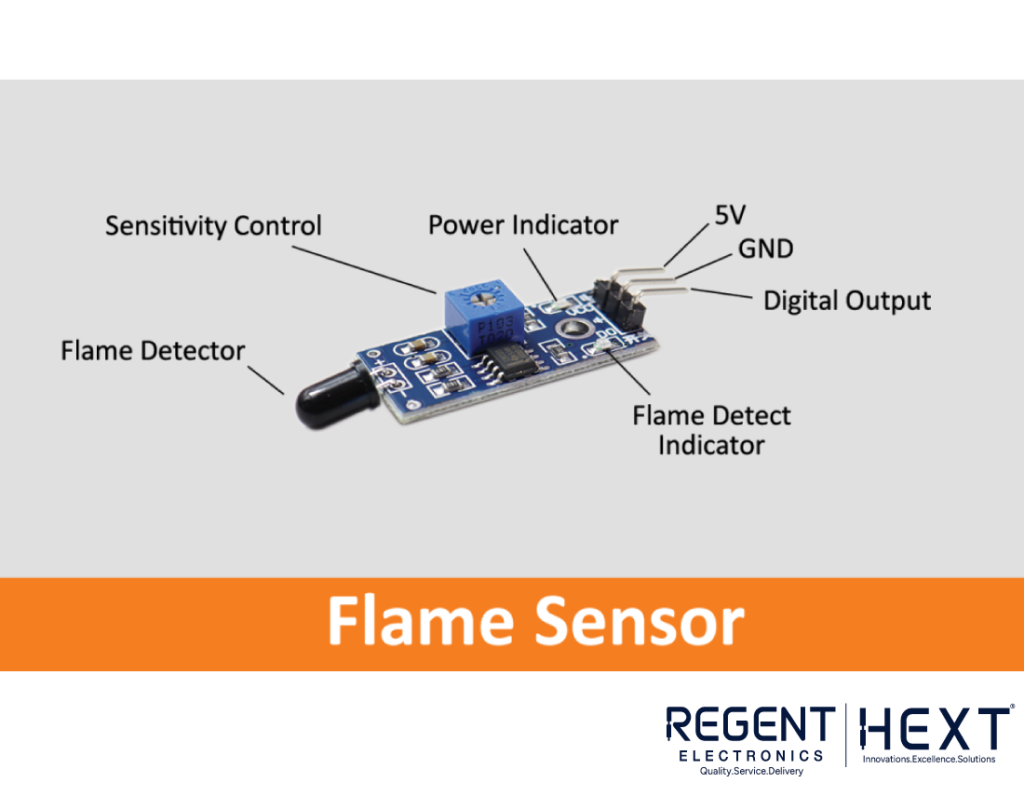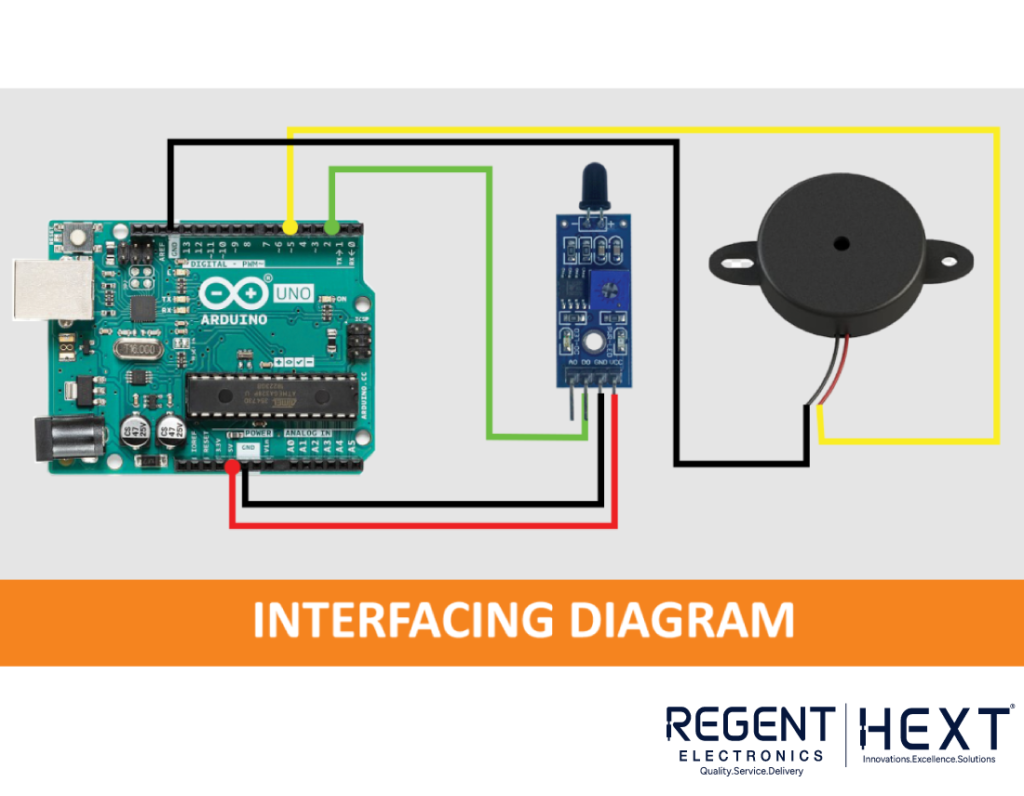
Interfacing Flame Sensor with Arduino – Fire Detection Alarm System
Introduction
Fire safety is a crucial concern for homeowners, businesses, and industries. One of the most effective ways to prevent fire-related disasters is by using fire detection systems. A flame sensor is a highly responsive device that detects fire using infrared flame flash technology. It operates within a sensitivity range of 4.3 to 4.4 micrometers, making it more accurate and faster than traditional smoke detectors.
In this tutorial, we will explore how to interface a flame sensor with an Arduino to build a fire detection alarm system. This project will help detect fire early and alert users using a buzzer, ensuring safety and prevention of damage.
What is a Flame Sensor?

A flame sensor is an electronic device that detects fire or flames by identifying specific wavelengths of infrared light emitted by combustion. It primarily consists of a phototransistor, which is typically positioned at the front of the sensor module in the form of a black LED.
The infrared spectral band of a flame sensor falls within the 4.3 to 4.4-micrometer range, which matches the resonance frequency of carbon dioxide (CO2) produced by burning organic compounds. This capability allows the sensor to quickly and accurately detect fire, making it more efficient than conventional smoke detectors.
Components Required
To build this fire detection alarm system, you will need the following components:
- Arduino Uno
- Flame Sensor
- Buzzer
- Jumper Wires
- Breadboard
- USB Cable
Working Principle

- Connections: Connect the flame sensor to the Arduino board as per the circuit diagram.
- Code Uploading: Upload the Arduino code to the board.
- Detection Process: Once a fire source is placed in front of the flame sensor, it will detect the infrared radiation emitted by the flame.
- Signal Processing: The sensor sends an output signal to the Arduino, which processes the input.
- Alarm Activation: If a flame is detected, the Arduino triggers a buzzer, alerting users about the presence of fire.

Arduino Code
const int buzzerPin = 5;
const int flamePin = 2;
int Flame = HIGH;
void setup()
{
pinMode(buzzerPin, OUTPUT);
pinMode(flamePin, INPUT);
Serial.begin(9600);
}
void loop()
{
Flame = digitalRead(flamePin);
if (Flame == LOW)
{
Serial.println(“Fire is Detected”);
digitalWrite(buzzerPin, HIGH);
}
else
{
Serial.println(“No Fire is Detected”);
digitalWrite(buzzerPin, LOW);
}
}
Output

When the flame sensor detects fire, it immediately triggers an alert by activating the buzzer. The detection range can extend up to 100 cm, depending on environmental factors such as temperature, humidity, and smoke levels. This system provides an early warning mechanism that can be further enhanced by integrating automatic fire suppression techniques.
Conclusion
This fire detection system using a flame sensor and Arduino is an effective, cost-efficient solution for fire safety. It helps detect fire in its early stages, reducing the risk of extensive damage and ensuring a safer environment.
Further modifications can include integrating IoT-based notifications or automated fire suppression mechanisms for enhanced security.
If you have any queries or suggestions, feel free to leave a comment below. Happy coding!
